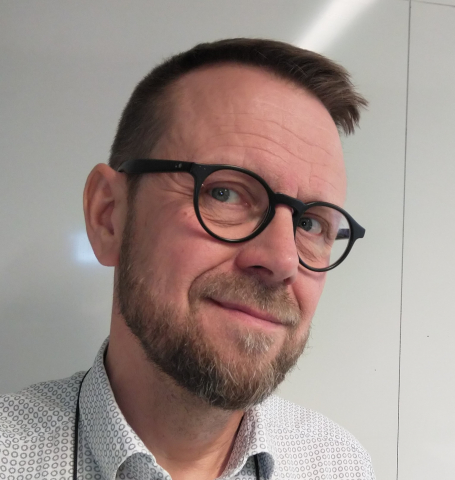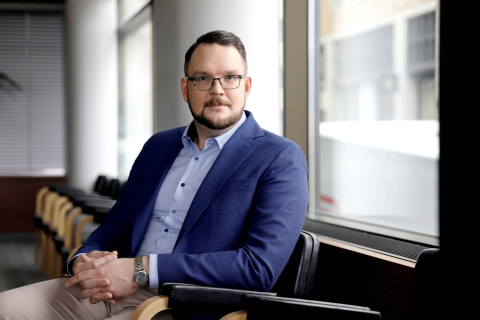
Multi-billion-euro export project nets Nokia funding from Business Finland – pledges to bring investments and new work into Finland
The new 5G technology for mobile data connections will provide consumers with faster data transfer rates. But can this also be put to use in industry, mining, ports and airports? Yes it can, says Nokia, which is currently building a network of companies and institutes of higher education. The fruits of the network’s innovation work will turn industrial 5G into a new multi-billion-euro export product for Finland.
“We are focusing on industrial 5G. We are creating networks to suit the needs of mines, factories, ports and airports. Under Business Finland’s programme for leading companies, we are creating hardware and software capabilities to suit industrial environments,” says Pertti Lukander, Finland Lead at the Nokia Bell Labs research organisation.
At the start of the year, Business Finland launched a challenge competition for leading companies. The idea was that the leading companies of company networks operating internationally must tackle significant future challenges and increase their research, development and innovation (RDI) investments in Finland. The winners of the competition are three projects from four leading companies, one of which is Nokia’s industrial 5G project.
- Competition winners pledge hundreds of new jobs
-
- Business Finland’s competition attracted 25 entries, and three projects from four leading companies were selected as the winners: Nokia’s “Finland to become a pioneer in industrial 5G networks” project, Neste’s globally scalable solution for reducing the consumption of crude oil, and a project by Fortum and Metsä Group to manufacture fibre-based consumer products and scale up to global markets.
- The winning companies have also made a commitment to create hundreds of RDI jobs and increase their RDI investments by hundreds of millions of euros.
- The projects are intended to lead to additional investments in Finland to the tune of billions of euros.
- Business Finland will provide a total of EUR 60 million in funding for the winning projects. The funding will only be paid when the agreed targets have been met.
- A further precondition is that the projects make a substantial impact on the targets in the government’s programme, which call for the rate of RDI investment in Finland to be brought to 4 per cent of gross domestic product by 2030 and for the employment rate to rise to 75 per cent.
- The winning companies must expand their RDI collaboration with research institutions and SMEs.
- As part of the programme for leading companies, Nokia plans to invest an initial EUR 50 million in 5G research and development in Finland over three years.
- Nokia is also recruiting new personnel for its research and development teams, and it is also creating other research and development projects targeting selected branches of industry in conjunction with its project.
- The project for leading companies involves all of the Nokia business groups that have active research and development operations in Finland: Mobile Networks, Nokia Software, Global Services, Nokia Technologies, Nokia Enterprise, and Nokia Bell Labs.
5G offers incredible improvements for working life and the environment
To take mining as an example, 5G could lead to incredible changes in the safety of employees and the use of natural resources, among other things.
“It will be a huge step forward if functional networks can be installed in mine galleries in an agile way and enable machinery and equipment to operate automatically. This would improve efficiency and occupational safety at work and in the mine, and it would help to use natural resources more efficiently thanks to greater accuracy of work through automation. Now is the time for us to create such ecosystems in cooperation with mining companies,” says Lukander.
Under Business Finland’s programme for leading companies, Nokia is creating hardware and software capabilities to suit industrial environments, says Pertti Lukander.
In its ecosystem, Nokia works with many other technology companies and research institutions on development work.
“The idea is to create a model in which the leading company – Nokia – creates ecosystems that develop new inventions. In two or three years, a solution can be expanded to cover an entire business sector, and it can be expanded to, for example, mines, factory environments and ports elsewhere in the world to create and sell efficiency and joint automation solutions. That is the big dream.”
Investment funding feeds risk appetites
Nokia has pledged to invest EUR 50 million in industrial 5G in the initial phase, and it will receive EUR 20 million from Business Finland if the requirements set in the competition are met. But why does a company like Nokia need and receive investment support?
“The government must have good data showing the impact of previous funding interventions and the success they have brought to Finland. Investment funding feeds companies’ risk appetites and facilitates research. The funding models used in Finland have also encompassed the ecosystems around companies. The programme for leading companies takes the opposite approach: we create ecosystems, and we are committed to their success. This is also a criterion for receiving funding. It is a very good model,” Lukander says.
Under the programme for leading companies, we create ecosystems, and we are committed to their success.
Heikki Kuutti Uusitalo, Head of Innovation Policy at Technology Industries of Finland, also has positive words to say about the programme for leading companies. He adds that a single application for inclusion in the programme can turbocharge an entire network.
“Large corporations employ a lot of people and engage in innovation activities on a large scale. Thanks to the procurement, purchasing and collaboration of leading companies that are awarded funding, the money also passes down to local SMEs, institutes of higher education, and research institutions,” Uusitalo says.
Finland’s RDI investments must be increased to 4 per cent of GDP and target industrial reform: digitalisation and the development of low-carbon solutions, says Heikki Kuutti Uusitalo.
Lukander points out that Nokia conducts an enormous amount of product development work globally.
“Product development involves considering the significance of development in terms of the operating environment, and one aspect of this is the possibility of receiving public funding. The programme for leading companies implements this effectively, and we are committed to increasing the amount of product development work in Finland. Furthermore, we could not have carried out this project in Finland if we had not had the necessary industrial partners here.”
“The programme for leading companies is a win-win situation”
Both Lukander and Uusitalo hope to see new leading company projects.
“The investments made under the programme are so substantial that large companies are interested in competing for the funding. This is not necessarily the case with smaller project funding rounds. It is possible that the costs of application and administration would result in investments being overlooked entirely. However, these small-scale funding interventions have a significant impact on other companies. In this sense, the programme for leading companies is a win-win situation,” says Uusitalo.
Finland has many strengths, such as a high level of expertise, good infrastructure, safety and stability. On the other hand, we are located on the periphery, with large distances to other places. We also have high taxes and levies on employers that make labour expensive.
“Every investor makes their own calculations and compares countries. Unfortunately, industrial investments in Finland have lagged behind competing countries. This shows that there is room for improvement,” Uusitalo says.
In Lukander’s opinion, funding must definitely target reform rather than protecting the old ways of doing things.
Green digitalisation enhances the use of natural resources and processes. Finland now has the chance to take big steps forwards.
“Company-driven innovation money is a very effective way to reform and rejuvenate business. For example, Nokia has made a commitment to 1.5-degree climate targets, and green digitalisation enhances the use of natural resources and processes. Finland now has the chance to take big steps forwards by capitalising on the disruption that is now occurring. What if we could also clean up the Baltic Sea?” he envisages.
This vision is not so far-fetched, as digital solutions also enable the environmental loads of water bodies to be reduced significantly.
Strong interest in industrial 5G
Nokia has pledged to create a substantial number of new jobs in Finland under its industrial 5G project.
“The project began at the start of July, and it is gradually expanding. In order to get the project off the ground, we transferred some personnel from other projects, but new software experts must be recruited, both to replace the transferred personnel and for this project,” Lukander says.
Work will also be available for people starting out in their careers, as well as those seeking a new direction in their software work.
“Hundreds of people have been recruited to work on 5G in recent years, so the expertise exists in Finland. We also have highly international people, partly due to the fact that our institutes of higher education are so international,” Lukander says.
As the project is just at the outset, the search for partner companies and institutes of higher education is still ongoing.
“Initially, we are developing capabilities internally, and most of the work is being done in-house, but the projects that are now starting up have garnered a surprisingly large amount of interest among various universities and research institutions, as well as industrial operators.”
Text: Marjo Ollikainen





